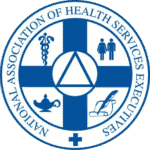The past decade has seen both subtle and glaring changes to our clinical workflows. One of the biggest is the large volume of mergers and acquisitions during this time frame that left a large portion of our nation’s doctors employed and not entrepreneurial. The technology has changed, too, with many of our patients discarding the old family practice relationship for minute clinics and urgent care. These are only the tip of the iceberg; the healthcare paradigm is shifting again, and doctors will need to continue to adapt.
As we move more firmly into value-based healthcare, how is the employment model for physicians changing? What can doctors expect for the future?
The Death of the Doctor Entrepreneur
M&A activity in the past few years has created centralized healthcare models. Many large health systems were in acquisition mode in the past decade. New doctors came out of residency clamoring to be employed, seeing the regularity of the paycheck and less entrepreneurial hassles as a plus. Health Leaders Media reports these new doctors are flooded with employment offers; 76% of primary care residents received 10 or more job solicitations during their training along.
But the healthcare organizations are at the end of their strategic plans as that first wave of newly employed docs reaches the end of their employment contracts. This coincides with a time when doctors are less connected to their patients. The younger generations are not tied to one doctor, either, as the consumerization of healthcare enters its newest phase of digital doctor exams, and minute clinics. Almost half of millennials report they don’t have a PCP, and they’re fine with that. With most doctors employed under a system umbrella, they too feel more mobile and less connected. Precheck says, “They are no longer attached to their patients.”
As we approach a severe clinical shortage of doctors, nurses, and home care workers, expect clinicians to stay employed but go elsewhere. It’s a seller’s market in favor of doctors, and we predict many will consider a job jump next year into a new employment model either under their existing system umbrella or at a competitor.
Medical turnover next year, coupled with clinician shortages, will cause fluctuations in patient care and satisfaction scores. It’s a more dynamic, shifting market, and healthcare systems will scramble to keep up.
As the physician shortage worsens, expect nurse practitioners, physician assistants, and other advanced practice clinicians to continue to play an important operational and strategic role in care delivery. Today, doctors are typically left with the assessment and medical decision-making, while advanced practice clinicians play pitch hitter at the beginning and end of the visit. This is one of the biggest shifts in the physician’s workflow today, whether they are primary care or a specialist. Today, medicine is a team sport. As the baby boomer population ages, doctors may shift further into the background because these patients will require consistent monitoring of chronic diseases but fewer physician visits. Technology will play a huge role in these cases, with remote monitor tools allowing for easier monitoring of routine physical checks. Future doctors will need to stay abreast of these tools.
We know that these changes are often not what our clinicians have trained for. But healthcare is changing, and clinicians must adapt to new rules, workflows, and technologies. In 2020, if your practice isn’t living up to your goals, contact the healthcare staffing specialists at UHC Solutions for a confidential discussion.





